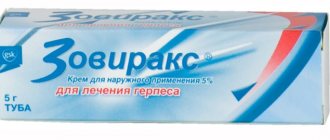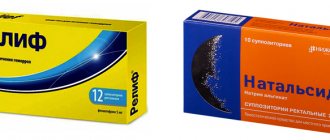Composition of the drug and release form
The drug "Gordox" is presented in the form of a solution for injection. This is a fibrinolysis inhibitor, the main active component of which is aprotinin. Benzyl alcohol, sodium chloride, and purified water are used as auxiliary elements.
Gordox solution cannot be used for self-medication and is available in pharmacies only with a prescription. The drug is packaged in 10 ml transparent ampoules, which are located in a cardboard box. Less commonly, the medication is presented in the form of a concentrate for preparing a solution and has the form of a powder.
Instructions for use of Gordox
According to the instructions, Gordox is pre-diluted with a solution of glucose or sodium chloride before use.
It is used intravenously, only in a lying position. Local use of Gordox is also possible, for which a gauze swab soaked in the drug (100 thousand KIE) is applied to the site of bleeding. Intra-articular injections of 200 thousand KIE can be prescribed for rheumatic joint lesions.
According to the instructions, the children's dosage of Gordox is calculated based on body weight - 20 thousand KIU per 1 kg.
Indications
The drug "Gordox" can only be prescribed to adult patients. Most often it is used during coronary artery bypass surgery as a prophylaxis against blood loss. In addition, the medicine can be prescribed for various forms of pancreatitis - acute and chronic. Often the medication is used in surgery when there is a need to treat the pancreas. Gordox solution can be used during diagnostic studies to prevent enzymatic autolysis of the pancreas.
Any surgical intervention is characterized by serious blood loss. The most dangerous in this regard are considered to be surgical operations on the prostate gland and lungs, since they have a high probability of bleeding. Blood loss due to hyperfibrinolysis can be controlled using the drug Gordox. It is prescribed for serious injuries to the skin (burns, cuts, allergic reactions).
Gordox solution can be prescribed to pregnant women in the last trimester. The medicine helps protect the mother in labor from serious blood loss. In addition, the risk of amniotic fluid embolism is significantly reduced.
The drug can be used as an adjuvant for burn, toxic or traumatic shock. It is used for angioedema of tissues. The drug is often prescribed after surgery as a prophylaxis against embolism and bleeding in the lungs. For polytraumas, Gordox solution in ampoules helps to avoid fat embolisms. It is especially often prescribed for fractures of the skull and lower extremities.
Concentrate for the preparation of solution for intravenous administration Gordox (Gordox)
Instructions for medical use of the drug
Description of pharmacological action
A polypeptide obtained from the lungs of cattle. Blocks the kallikrein-kinin system. Inhibits both total proteolytic activity and the activity of individual proteolytic enzymes. It is a polyvalent inhibitor of proteases (including plasmin, kininogenases, trypsin, chymotrypsin, kallikrein, including those activating fibrinolysis). Reduces the fibrinolytic activity of the blood, inhibits fibrinolysis, and has a hemostatic effect in coagulopathies. The activity of aprotinin is expressed in kallikrein inactivating units (KIU), in trypsin inactivating units of the European Pharmacopoeia (Ph.Eur.U), as well as in antitrypsin units (ATrE). 1 Ph.Eur.U corresponds to 1800 KIU. 1 ATRE corresponds to 1.33 KIU.
Indications for use
Pancreatitis (acute, exacerbation of chronic), pancreatic necrosis. Performing diagnostic studies and operations on the pancreas (prevention of enzymatic autolysis of the pancreas during operations on it and nearby abdominal organs). Prevention of acute nonspecific postoperative mumps. Bleeding due to hyperfibrinolysis: post-traumatic, postoperative (especially during operations on the prostate gland, lungs), before, after and during childbirth (including with amniotic fluid embolism); polymenorrhea. Angioedema. Shock (toxic; traumatic, burn, hemorrhagic). Extensive and deep traumatic tissue damage. As an auxiliary therapy - coagulopathies characterized by secondary hyperfibrinolysis (in the initial phase, before the onset of effect after the use of heparin and replacement of coagulation factors); massive bleeding (during thrombolytic therapy), during extracorporeal circulation. Prevention of postoperative pulmonary embolism and bleeding; fat embolism in polytraumas, especially in fractures of the lower extremities and skull bones.
Release form
concentrate for the preparation of solution for intravenous administration 100,000 KIU/10 ml; ampoule 10 ml box (box) 25; concentrate for the preparation of solution for intravenous administration 10,000 KIU/ml; ampoule 10 ml contour plastic packaging (pallets) 5 cardboard box (box) 5;
Pharmacodynamics
A polypeptide obtained from the lungs of cattle. Blocks the kallikrein-kinin system. Inhibits both total proteolytic activity and the activity of individual proteolytic enzymes. It is a polyvalent inhibitor of proteases (including plasmin, kininogenases, trypsin, chymotrypsin, kallikrein, including those activating fibrinolysis). Reduces the fibrinolytic activity of the blood, inhibits fibrinolysis, and has a hemostatic effect in coagulopathies. The activity of aprotinin is expressed in kallikrein inactivating units (KIU), in trypsin inactivating units of the European Pharmacopoeia (Ph.Eur.U), as well as in antitrypsin units (ATrE). 1 Ph.Eur.U corresponds to 1800 KIU. 1 ATRE corresponds to 1.33 KIU.
Pharmacokinetics
Aprotinin, being a polypeptide, is inactivated in the gastrointestinal tract. Excreted in urine in the form of inactive breakdown products. T1/2 in the terminal phase is 7-10 hours.
Use during pregnancy
There are no clinical data on the safety of using aprotinin in the second trimester of pregnancy and lactation.
Contraindications for use
Hypersensitivity, DIC syndrome.
Side effects
Allergic reactions.
Directions for use and doses
IV, slowly, exclusively in the patient’s “lying down” position. Test dose: at least 10 minutes before the initial dose, a test dose of 1 ml (10,000 KIU of aprotinin) is administered intravenously to determine the presence of hypersensitivity to the drug. For medicinal purposes: initial dose - 50,000 KIU (maximum rate - 5 ml/min), then intravenous drip at 50,000 KIU/hour. For bleeding and hemorrhages associated with hyperfibrinolysis - 100,000–200,000 KIU intravenously, if necessary - up to 500,000 KIU (depending on the intensity of bleeding). During surgical interventions for the purpose of prevention before, during and after surgery - 200,000–400,000 KIU intravenously, in a slow stream or drip, then over the next 2 days, 100,000 KIU. For hemostasis disorders in children - 20,000 KIU/kg/day. Local application of gauze impregnated with 100,000 KIU is possible, applied to the site of bleeding. In acute pancreatitis - 500,000–1,000,000 KIU, followed by a decrease to 50,000–300,000 KIU for 2–6 days, and complete withdrawal after the disappearance of enzymatic toxemia. In case of exacerbation of chronic pancreatitis, a single dose of 25,000 KIU is administered for 3–6 days; daily dose - 25,000–50,000 KIU. In the postoperative period and prophylactically (if there is a risk of injury to the pancreas), the initial dose is 200,000 KIU, then for 2 days after surgery - 100,000 KIU every 6 hours. Treatment of primary hyperfibrinolytic bleeding: for adults, the initial dose is 500,000 KIU (50 ml), in /c, slowly, maximum speed - 5 ml/min (with the patient in the “lying” position); children - 20,000 KIU/kg/day. Reducing bleeding and reducing the need for blood products in cardiac surgery (extracorporeal circulation): 2,000,000 KIU should be added to the fluid filling the oxygenator. During a 2-hour operation, the patient receives 5,000,000 KIU of aprotinin. Elderly patients do not require a special dosage. Children: Available dosing data are insufficient. There are no data on the safety of the drug for pregnant and breastfeeding women. In the first and third trimesters of pregnancy and during lactation, the use of the drug is contraindicated. It is necessary to weigh the benefits and harms when prescribing during pregnancy.
Interactions with other drugs
The addition of aprotinin to heparinized blood causes an increase in the clotting time of whole blood. When used simultaneously with rheomacrodex, the sensitizing effect is mutually enhanced. With simultaneous use, aprotinin, depending on the dose, inhibits the action of streptokinase, urokinase, alteplase. Aprotinin is a weak inhibitor of serum pseudocholinesterase. With simultaneous use, this may slow down the metabolism of suxamethonium chloride and enhance muscle relaxation, and there is a risk of developing apnea.
Special instructions for use
Before starting therapy, it is advisable to conduct a skin test to determine the patient’s individual sensitivity to aprotinin. If there is a history of allergic reactions, the use of histamine H1 receptor blockers and corticosteroids is recommended before starting aprotinin therapy. In case of hyperfibrinolysis and DIC syndrome, aprotinin can be used only after eliminating all manifestations of DIC syndrome and against the background of the preventive effect of heparin. Use with caution in patients who have been administered muscle relaxants within the previous 2-3 days.
Storage conditions
List B.: At a temperature of 15–30 °C.
Best before date
60 months
ATX classification:
B Hematopoiesis and blood
B02 Hemostatic drugs
B02A Fibrinolysis inhibitors
B02AB Plasma proteinase inhibitors
B02AB01 Aprotinin
Who should not be prescribed the medication "Gordox"?
The medicine has practically no contraindications. Due to the lack of sufficient research, the medication is not prescribed to minor patients. The safety of the product in children has not yet been established. In rare cases, sensitivity to individual components of the drug may occur. If individual intolerance occurs, the Gordox solution is immediately discontinued.
During pregnancy, the medication is not contraindicated. But it should only be used as prescribed by a doctor. The medicine can only be used if the potential benefit to the mother significantly outweighs the harm to the fetus. Women in labor who have taken the medicine "Gordox" leave mostly positive reviews. The medicine helps to avoid large blood loss during ruptures.
The use of the drug during lactation has not been studied. Theoretically, the medicine is absolutely safe when it enters the body of an infant through breast milk. The fact is that Gordox does not have bioavailability when used internally.
Use during pregnancy and lactation
Gordox can be used to treat expectant mothers only after the first trimester of pregnancy. However, even in later stages of pregnancy, the drug is used exclusively as prescribed by a doctor and if there are clear indications for its use. At the same time, constant medical supervision is important when treating with this drug.
There are no clinical data on the safety of using the drug during breastfeeding.
Studies regarding the effects of the drug on the body of pregnant women have not been conducted. During pregnancy, the use of Gordox is permissible only if the potential benefits of therapy for the mother significantly outweigh the possible risks for the fetus.
When assessing the benefit/risk ratio, it is necessary to take into account the negative impact on the fetus of severe adverse reactions that sometimes occur during the administration of a drug, which include cardiac arrest, anaphylactic reactions, etc., as well as treatment procedures that are carried out to eliminate these reactions.
special instructions
Aprotinin, which is the main active component of the drug, can cause serious allergic reactions. With initial use, side effects almost never occur. The medication should be reused with caution. And before using the Gordox solution, the instructions for use should be studied first. In rare cases, anaphylactic reactions may occur. Therefore, in a hospital, before administering the main dosage of the medication, a sample of 1 ml is administered. The doctor observes the patient's reaction for 10 minutes. If no side effects are observed, the basic dose of Gordox is administered.
In rare cases, the patient may not respond to the trial dosage. And when a therapeutic dose is administered, serious allergic reactions are observed. If any phenomena occur that significantly worsen the patient’s well-being, use of the drug “Gordox” should be stopped immediately.
When using the drug, you should remember that it contains benzyl alcohol. Based on this, the drug "Gordox" should be prescribed with caution. The dosage of benzyl alcohol per day is calculated based on the patient’s body weight (90 mg per 1 kg of weight).
The Gordox solution tends to settle at the bottom of the storage container. If the product's shelf life has not yet expired, but a precipitate has already formed, it is better not to use the drug. Before starting therapy, the medication must be subjected to a thorough visual inspection.
The medicine is not contraindicated for use in old age. In rare cases, dose adjustment is necessary. The medicine is prescribed with caution to patients with liver and kidney failure.
The drug "Gordox" does not affect driving a car or other complex mechanisms in any way. But it should be taken into account that the medication is prescribed most often in severe cases, when the patient is in the hospital. Therefore, there is initially no need to get behind the wheel of a car.
General description of Gordox
The medicine was first produced in Hungary. It is a hemostatic agent and has a suppressive antienzyme effect. Its therapeutic effectiveness is high: according to statistics, more than eighty percent of people who were treated with Gordox noted rapid relief of symptoms and a positive final result.
When treating pancreas, the drug Gordox is used exclusively in a hospital with strict adherence to the instructions. It is characterized by uniform distribution throughout the tissues of the body, and its maximum content in the blood is observed five to seven hours after administration. It cannot be mixed with other medications except electrolyte solution and dextrose. If Gordox or its analogs are used together with alteplase, urokinase, streptokinase, then the effectiveness of all drugs is mutually reduced.
Release form: transparent glass ampoules containing 10 milliliters of injection solution (colorless, sometimes with a slight tint of yellow) for intravenous use. Ampoules in quantities of 5 pieces are contained in plastic trays. An open ampoule with unused solution cannot be used a second time. The drug should be stored at a temperature range of 15 to 30°C, and not exposed to the sun.
Indications for its use
Gordox has the following indications for use:
- acute pancreatitis;
- chronic disease in an acute period;
- hemorrhagic and toxic shock with pancreatitis;
- pancreatic necrosis;
- pancreatitis developing after injuries and surgical interventions.
Sometimes the drug is used during the diagnosis of pancreatic diseases (with ERCP).
Ingredient composition of the product
The main active ingredient of this drug is aprotinin, which is of animal origin. Excipients are sodium chloride, water for injection and benzyl alcohol. Aprotinin is excreted from the body through the kidneys in the urine after the first administration for two days in an amount of up to forty percent.
Read: why cardiospasm of the esophagus occurs.
Find out what diet you need to follow for erosive gastritis.
Mechanism of action of the drug
Gordox has a hemostatic effect, promoting the inactivation of enzymes such as trypsin, chymotrypsin, plasmin, kallikrein, kininogenase. The product significantly reduces the activity of individual proteases and their total activity. Thus, it reduces the areas of destruction. A characteristic feature of the main active substance is that it has a hemostatic effect.
Dosage
The medication "Gordox" is administered only intravenously. This is most often done using IV systems. The drug is administered slowly at 5-10 ml per minute. Only main veins are used, through which other medications should not flow. Due to the fact that patients often develop anaphylactic or allergic reactions, a test injection is given 10 minutes before the main dose is administered. Its volume is 1 ml. The doctor carefully monitors the patient's vital signs. Therapy can be continued if no adverse reactions occur.
The initial dosage for treating adult patients is 100-200 ml. The medicine is administered gradually over 10-15 minutes. Further, the dosage can be increased by another 200 ml. To ensure normal dilution of the drug, it is recommended to increase the dosage only during the recirculation period. The total volume of the drug during the entire course of treatment should not exceed 700 ml.
If side effects occur, the dosage of the drug may be adjusted. The drug is used to a lesser extent in patients over 60 years of age. Cases of drug overdose have not been previously identified.
Side effects
In patients who use the drug "Gordox" for the first time, side effects occur quite rarely. Serious allergic reactions may occur if the medication is used repeatedly. Anaphylactic shock is the most dangerous for patients. But this side effect occurs only in 1% of cases. Any changes in health require consultation with a doctor. Most often, side effects develop when the drug "Gordox" is used repeatedly for 6 months. Before using the medicine, be sure to administer a test dose.
Allergic reactions most often manifest themselves as disorders of the cardiovascular system. The patient's heart rate may increase and blood pressure may increase. From the gastrointestinal tract, unpleasant symptoms such as nausea, diarrhea, and vomiting may be observed. Less commonly, skin rashes and itching may occur. Possible disorders of the respiratory system, which manifest themselves in the form of asthma or bronchospasm. In case of any manifestations of hypersensitivity, aprotinin-based drugs should be immediately discontinued. The patient must receive immediate assistance. Stories are familiar with cases of death due to the use of the drug in patients with a tendency to allergic reactions.
In some cases, disorders of the urinary system may occur. Kidney function may be impaired. Renal failure rarely develops. The decision to stop using the drug is made only by the doctor. If side effects are not significant, therapy continues. The dosage can only be adjusted.
Indications for use
You can give Gordox to a cat for the following diagnoses:
:
- acute and chronic pancreatitis;
- pancreatic necrosis (death of gastrointestinal tissue);
- bleeding that occurs for the first time, as a reaction to surgery, or after giving birth to a cat;
- angioedema;
- state of shock, for example, after injury or poisoning;
- with extensive deep injuries to the soft tissues of the cat’s body. Especially if there is a large loss of blood.
The only contraindication for use is pregnancy and lactation in a cat, as well as the pet’s hypersensitivity to the active substances of the drug, resulting in allergic reactions.
Interaction with other drugs
Gordox should be used with caution in combination with other medications. The instructions for use describe the products with which it is generally not recommended to use the solution. Preparations based on alteplase, urokinase, streptokinase cannot be taken together with aprotinin. The problem is that the activity of all of the above components will be significantly reduced. This means that the treatment will not give the desired result.
The Gordox solution is fully compatible only with glucose and hydroxyethyl starch. You should use the medicine together with other drugs only after consulting a doctor.
Storage conditions and periods
The medicine "Gordrks" is absolutely unpretentious. The instructions say that it should be stored at a temperature no higher than 30 degrees in a dry, dark place. There is no need to leave the solution in the refrigerator. But it’s still worth hiding the drug from children. Any medication is potentially dangerous for a little person. The ideal place to store Gordox solution is the farthest shelf in the closet.
The medication has a fairly long shelf life, which is 60 months from the date of release. It is worth noting that the medicine is available by prescription. There are rarely cases when the solution is not completely consumed during the treatment process.
"Gordox." Drug analogues
Sometimes it is not always possible to find a medicine with this name in pharmacies. But there are drugs that have identical pharmacological effects and also have a similar composition. If it is not possible to use the Gordox solution for pancreatitis, you can use the medication Trasylol. This medicine is also made on the basis of aprotinin. The medicine is used not only for pancreatitis. It is prescribed when performing operations or diagnostic tests on the pancreas. In addition, the medication helps stop post-traumatic and post-operative bleeding.
The medicine is not prescribed to minors, as well as to people who have a tendency to develop allergic reactions. The drug should be used with caution in elderly patients, as well as in women during pregnancy. Adverse reactions during the initial use of Trasylol solution occur quite rarely. If there is a need to reuse the drug within 6 months, there is a risk of developing anaphylactic reactions. To avoid any side effects, a test dose is administered before starting therapy.
The drug "Trasilol" is sold in pharmacies with a prescription, like the drug "Gordox". Use is possible only as prescribed by a doctor. All medications based on aprotinin can only be used in a hospital setting.
Less commonly you can find a medicine called “Aprotex”, which has completely similar properties.
Side effects of Gordox
From the central nervous system: psychotic reactions, hallucinations, confusion.
Allergic reactions: urticaria, itching, rhinitis, conjunctivitis, bronchospasm, anaphylaxis, anaphylactoid reactions (skin rash, itching, shortness of breath, nausea, increased heart rate up to anaphylactic shock in cases of circulatory failure, in some cases with death). With repeated administration of the drug, anaphylactic reactions are possible (frequency {amp}lt; 0.5%).
If a hypersensitivity reaction develops during infusion, administration of the drug should be stopped immediately and, if necessary, routine emergency care should be provided (for example, administration of adrenaline, corticosteroids, fluid replacement).
During cardiac surgery and the administration of large doses of aprotinin, a temporary increase in creatinine levels is possible ({amp}lt; 1%), which in very rare cases is accompanied by symptoms of clinical significance.
From the cardiovascular system: increased incidence of myocardial infarction during repeated by-pass operations on the coronary vessels compared to control groups, while mortality rates are the same; decreased blood pressure, tachycardia.
From the digestive system: nausea, vomiting (with rapid administration).
Local reactions: thrombophlebitis with repeated puncture and with prolonged administration.
Other: myalgia.
Particular attention should be paid to the side effects of using Gordox.
From the central nervous system, psychotic reactions, confusion and hallucinations are possible.
From the cardiovascular system, hypotension, tachycardia, and an increased incidence of myocardial infarction may occur during re-operation of coronary artery bypass grafting compared with control groups (mortality rates, however, are the same).
Allergic reactions include conjunctivitis, rhinitis, urticaria, bronchospasm, itching, anaphylaxis and anaphylactoid reactions (shortness of breath, skin rash, increased heart rate, nausea).
When aprotinin is administered in high doses and during cardiac surgery, a temporary increase in creatinine levels is possible, which in very rare cases is accompanied by clinically significant symptoms.
The use of the drug may lead to side effects such as decreased blood pressure, tachycardia, psychotic disorders, and hallucinations. Allergic skin reactions (itching, urticaria), rhinitis and conjunctivitis are also possible. In some cases, nausea, vomiting, diarrhea, myalgia, and bronchospasms were noted.
The cost of the drug and reviews about it
For patients who are in a difficult postoperative period, the drug "Gordox" significantly helps improve their well-being. Reviews show that the medication helps stop bleeding faster. As a result, blood pressure normalizes. Negative reviews about the medication can only be heard from those patients who are hypersensitive to aprotinin. Serious allergic reactions may occur that require discontinuation of the drug. But this does not mean at all that Gordox is ineffective. The instructions for use state that a test injection should be performed before starting therapy.
According to doctors, Gordox solution is effective for pancreatitis. Analogs can also be used to treat the disease. But they are often more expensive. The drug "Gordox" cannot be called cheap either. Its cost in some pharmacies is about 10,000 rubles. And this is just one package of 10 ml. The maximum dosage of the product can be 700 ml per course. It is easy to calculate how much treatment will cost. This is perhaps the biggest disadvantage that repels patients from the drug. But in some cases you don't have to choose. The use of the drug "Gordox" is vital.
Taking any medications should be discussed with your doctor. Before using Gordox, the instructions for use should be studied especially carefully. Negative reviews arise only from those who self-medicate. After all, the solution may be incompatible with some medications. Such treatment will not only not give positive results, but can also be dangerous to health.










